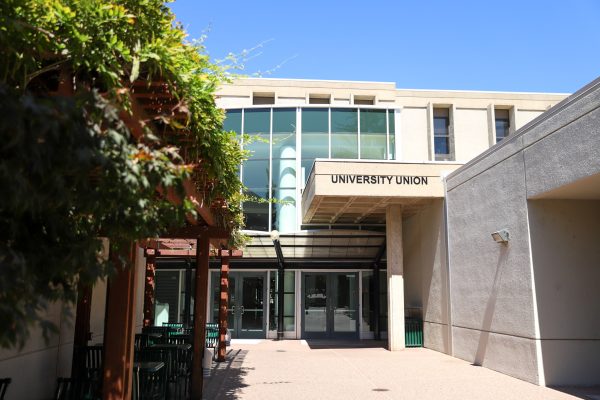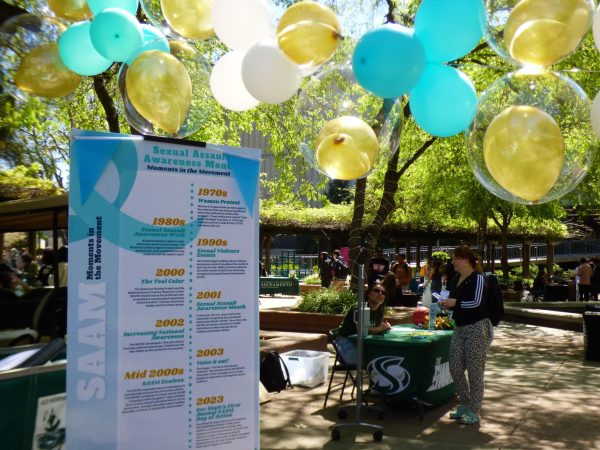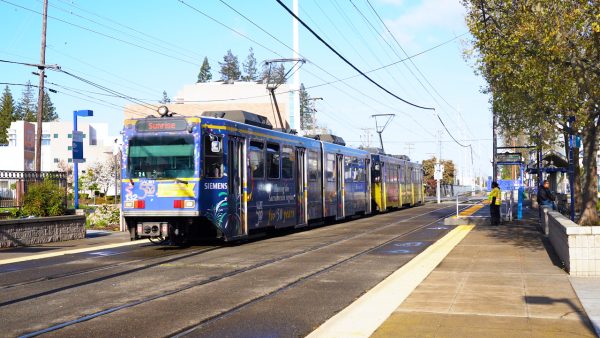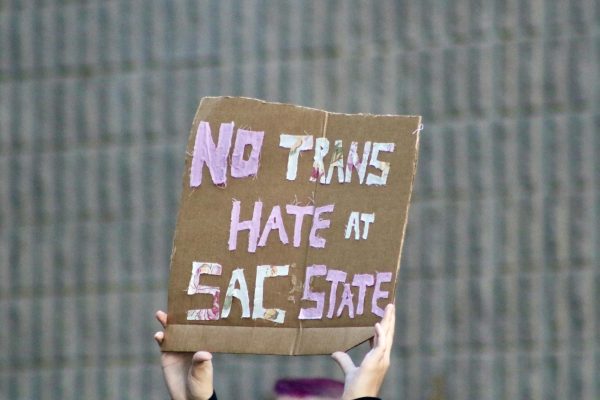Exhibit combines Western media with Chinese culture
January 4, 2011
Contemporary Chinese art work is now returning to more personal inspirations by using Western art tools.
“Artists draw from the same sources around the world,” said the director of the University Library Art Gallery Phil Hichcock. “This art work, coming from a different social standard and economy, is directly influenced by the culture these artists are immersed in but expressed in Western mediums so they appear to look similar. In this way it is easier to compare different cultural artwork because the influences behind the subjects are so different.”
Nineteen artists, all using different Western art media such as oil painting, sculpture and graphics, will be presented in a free exhibit titled “New Wave of Chinese Contemporary Art” in the University Library Gallery from December 10 – March 12.
“This art exhibition will show a new phase of growth for the Chinese contemporary art movement that has been building for three decades in China,” said exhibit curator Jessica Gezi Qu. “This exhibition reveals the diversity of Chinese contemporary art while simultaneously giving prominence to the art works’ individuality. It is a great opportunity for students and community to understand culture through art.”
This culture will be easier to grasp for students because of the use of Western mediums instead of the traditional calligraphy and wood block printing Chinese art is known for, Hichcock said.
“In my art I am using the already developed art language from the Western world to talk about Chinese stories,” said one of the featured artists Jian Wang. “This is a new show idea, the first of its kind, to showcase Chinese art, history and personal interest.”
Qu chose 40 pieces of contemporary artwork out of hundreds of potentials to reflect the cultural connection between the Chinese subjects and Western art forms.
“It is an obvious art movement, which is rather interesting since when society looks at art they are more about looking for an inner voice rather than obvious style,” Qu said. “You have to forget previous knowledge and appreciate this as a new phenomenon.”
The first reformation of art began when China pulled away from a more controlling government and the art work began to reflect Western culture, Wang said. This next wave still uses Western material but reflects the cultural stories of the individual artists.
Qu said art illustrates the criticisms of Chinese reformations in the political and cultural arena. These changes show that art can influence and directly impact the surrounding environment and this revelation inspires current Chinese artists to blend the pride of their history with modern elements of artistic style.
For Zhang Fangbai, a featured artist, this world is represented in paintings that represent power in an eagle, a fish or a bird. His birds represent a message that by following tradition people are also creating new traditions for the future, Qu said.
“Although contemporary art reflects the surrounding culture, it can also represent the anti-traditional culture or anything else that has had established rules. In any case, it offers people a fresh, new visualization of a constantly changing world compared to past art styles,” Qu said.
This new wave of art work represents today’s changing Chinese culture, Qu said.
“In today’s global community, Chinese contemporary art is a window into understanding a rapidly modernizing Chinese culture. This is one of the reasons that Chinese contemporary art is attracting a lot of attention and capturing the imagination of collectors, admirers and other artists throughout the international art market,” Qu said.
This exhibit opens the door for an art exchange between cultures, Hichcock said. He enjoys helping to host international exhibits at Sac State so that the school can keep these kind of high standards of diversity.
“We are a university, so we not only service art but also history and business and other schools on campus and in this region,” Hichcock said. “Sacramento has one of the most diverse cultures of any city in the United States and we should be proud. We are proud. And we try and bring that to the forefront. The world is not as big as you think and it’s accessible.”
Hichcock likes to think of art as a means of bringing cultures together, across the world and across campus.
Leia Ostermann can be reached at [email protected]








































































































































